The kitchen sink is one of the three points in your kitchen work triangle, the other two being the refrigerator and the cooktop. It’s where all your cooking ingredients are washed, and if you are not opting for a dishwasher, it’s where all the utensils and dishes are cleaned. While you might upgrade your appliances or buy new accessories, the kitchen sink is not replaced very often—all the more reason to pick carefully at the very outset!
Not sure what considerations you should keep in mind while purchasing a kitchen sink? We’ve put together a handy guide to get you going.
Sinks are available with or without the drainboard, and with one or two bowls of varying depths and sizes. If you are also installing a dishwasher, you could pick a smaller bowl, but if the sink is where all your utensils are being cleaned then the depth and size of the bowl matters.
Do keep in mind that the ideal depth of the bowl is around 8 inches. It can be rectangular, with sharp edges, or smoothly curved without any sharp edges at all. Pick the configuration and shape that makes the best sense for your usage.
Single bowls are the most popular option, as they are compact, cost-effective and functional.
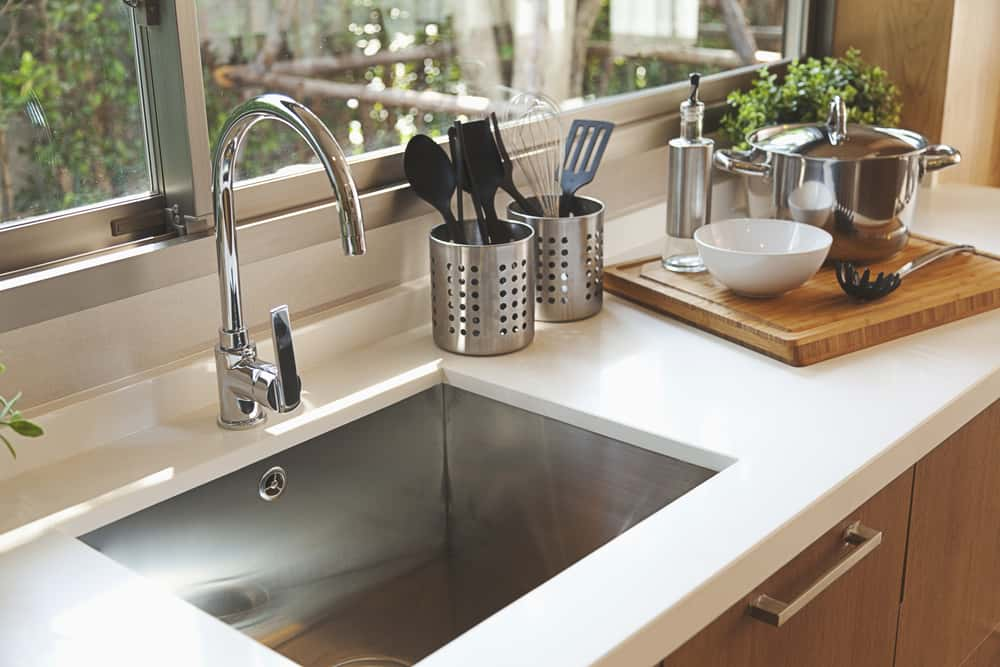
You can also opt for a double bowl sink, with one large bowl for washing up and one small bowl for food prep.
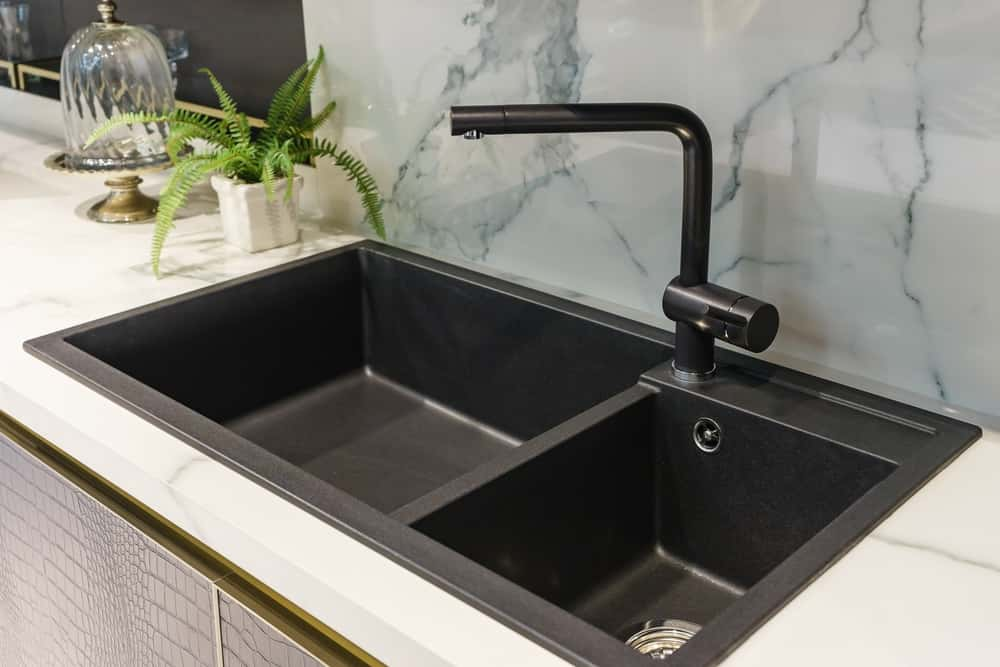
Another kind of double bowl sink has two bowls of the same size. This comes in useful when you’re washing utensils, as you can scrub and lather them on one side and rinse them out on the other.
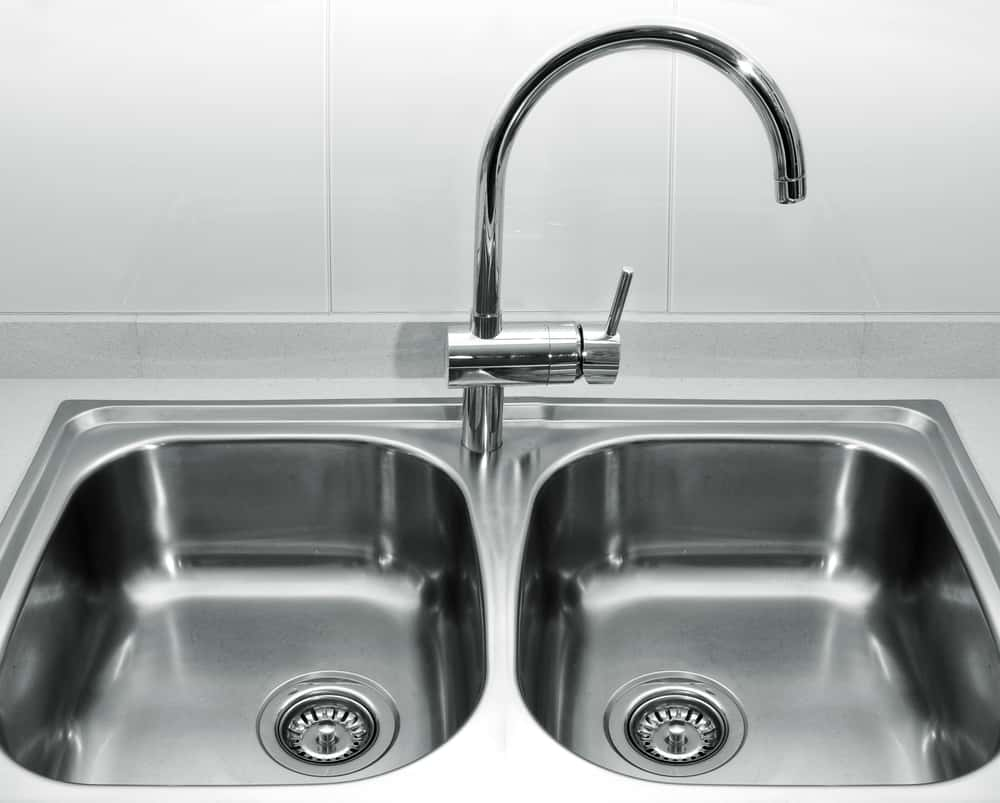
The drainboard comes in useful when you are washing up and need to keep utensils or vegetables, for example, to drip dry. It is designed with a small slope and has grooves that direct the flow of water into the sink, keeping the rest of the kitchen counter dry.
If you are choosing a sink with a drainboard, consider the layout of the kitchen and decide whether the drainboard should come on the right or the left of the bowl, for maximum convenience.
Sinks are also available with two bowls, and two drainboards, which offer valuable utility for drying wet utensils or stacking up dirty ones. Keep in mind that these occupy a lot of counter space and are not really suitable for a compact kitchen.
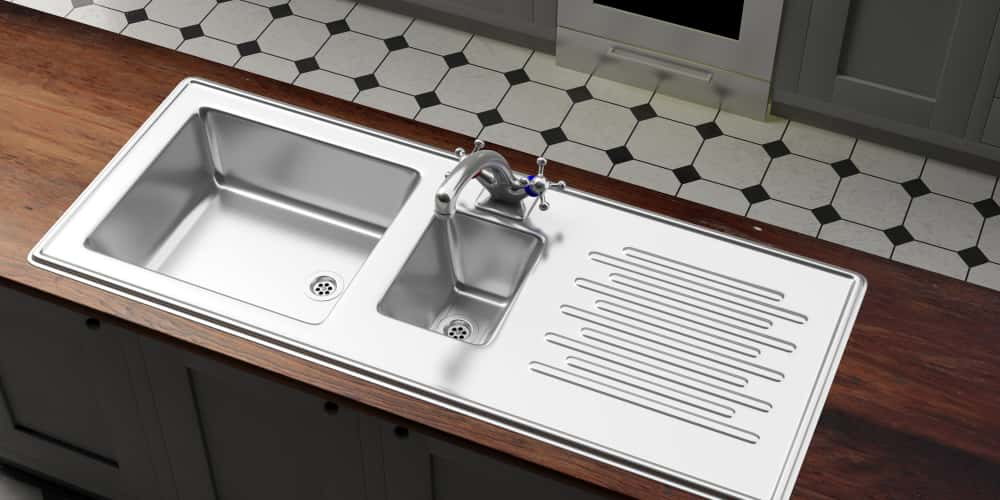

You might have noticed that some sinks have the rim fitted over the countertop, while others are fitted below the counter.
The top-mounted sinks are relatively cheaper and are very easy to install, as any imperfections in the cutting of the counter are hidden from sight. After fitting the sink, the edges could be sealed with a clear silicone sealant to prevent any leakage of water.
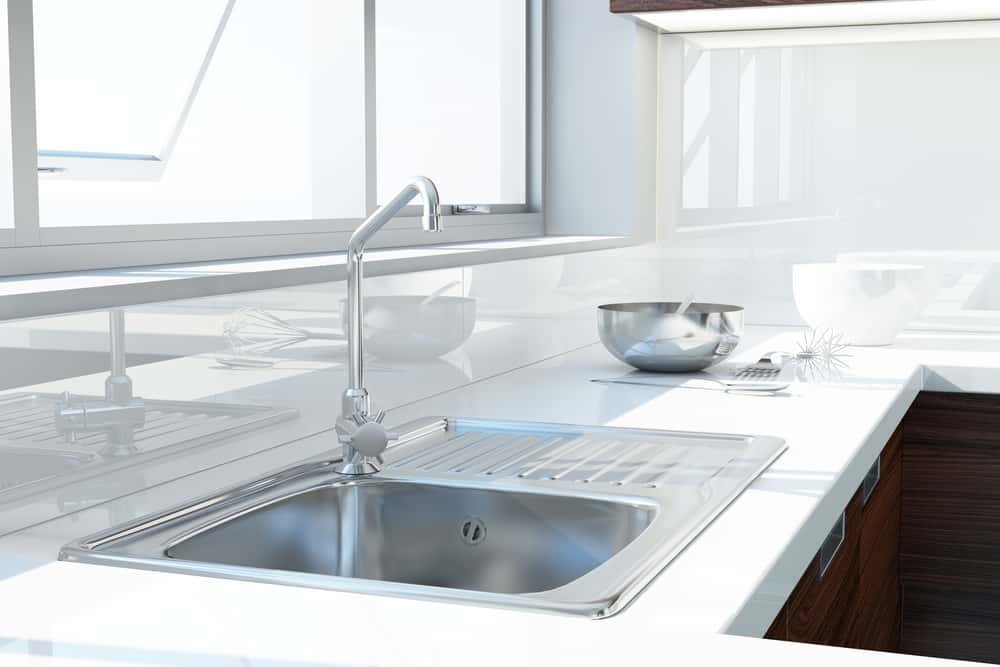
Undermount sinks are fitted below the counter, without a lip or rim sitting above the counter. Not only do these installations look more elegant, but they are also easier to clean as there are fewer places for dirt to get trapped. These sinks should only be fitted by experts as the cutting of the countertop should be very precise.
After fitting the sink, epoxy grouting in the same colour as the counter material could be done to finish the sides. It is always advised to finish the underside of the bowl with a silicone sealant to make it completely watertight.
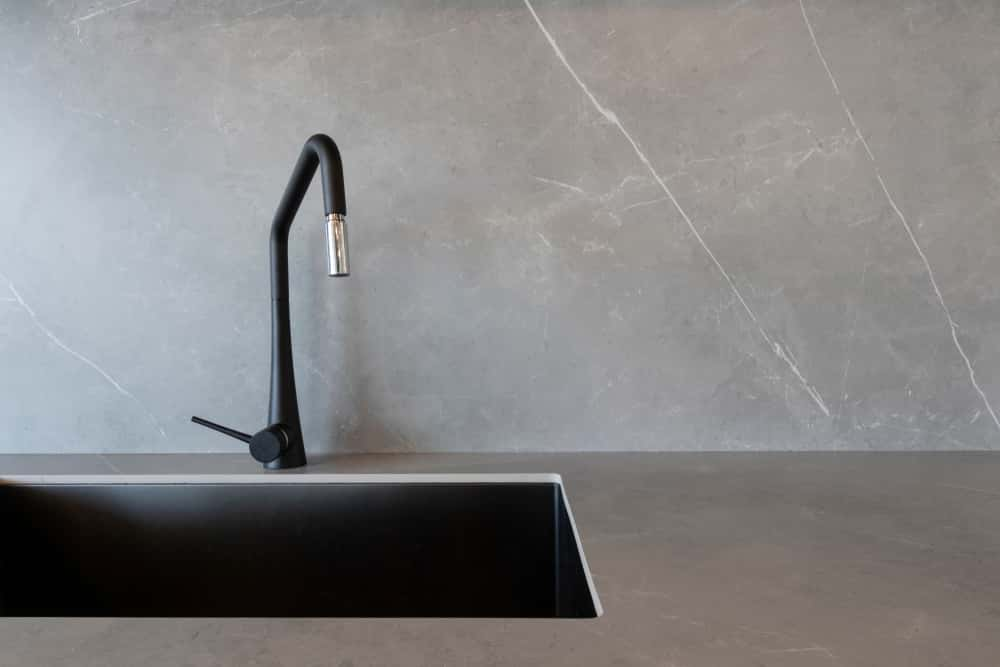
While the most popular material for Indian kitchens is stainless steel, there are a great many options available if you wish to choose something different. Here are the pros and cons of each material.
Stainless steel is resistant to heat and cold and is very easy to clean using just soap and water. This is the best option if you are working with a tight budget.
Do keep in mind, however, that if you choose a lighter gauge of steel, it can get easily dented. The stronger the sink, the thicker the gauge and the more it will cost. Steel can also get scratched with a sharp instrument like a knife.
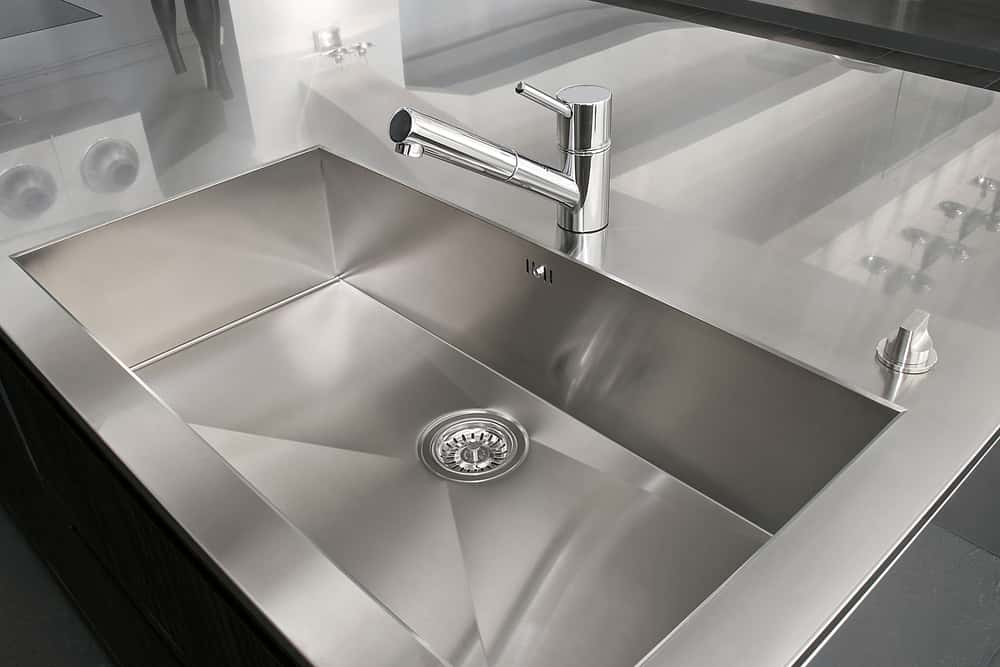
Quartz sinks are made of a composite material that combines quartz crystals and acrylic resin. They are seamless and do not have any joints, so are very easy to clean. These sinks come in a variety of bold colours and different sizes, with or without a drainboard. They do not get scratched and can stand up to very rough handling, making them very durable. They are also nonporous and do not get scratched easily. They are priced higher than stainless steel sinks.
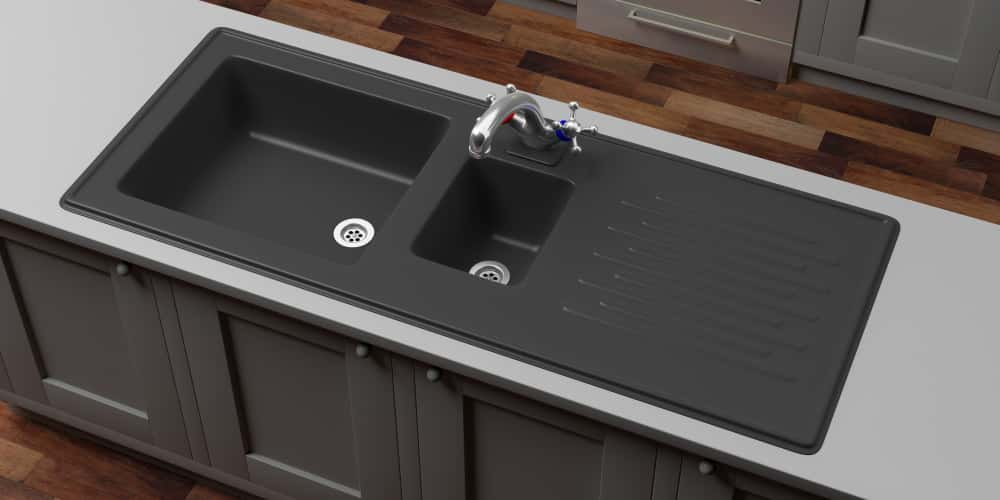
Corian is a popular countertop material that is low on maintenance, comes in many colours and finishes and is very durable. Corian can be seamlessly moulded into a sink that is continuous with the surface of the countertop. The material is completely nonporous, preventing the growth of any mould or mildew, and can be cleaned very easily. To ensure that you buy the original material from DuPontTM, as there are many cheaper versions that might look similar, but do not last as long. The original material is priced on the higher side.
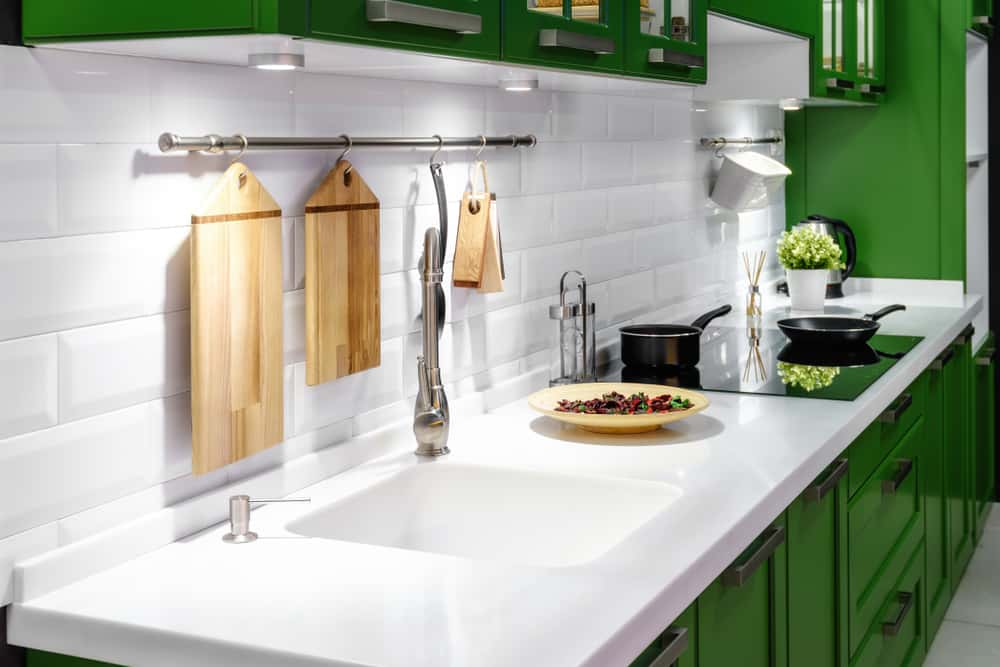
By using the same stone that you are using for the kitchen countertop, you can get an integrated sink. Always get an expert craftsperson who can ensure that the edges are seamless and the joint is not visible, otherwise the edges will harbour dirt which is difficult to clean. Sinks in marble or granite look very elegant and can be custom designed for your needs.
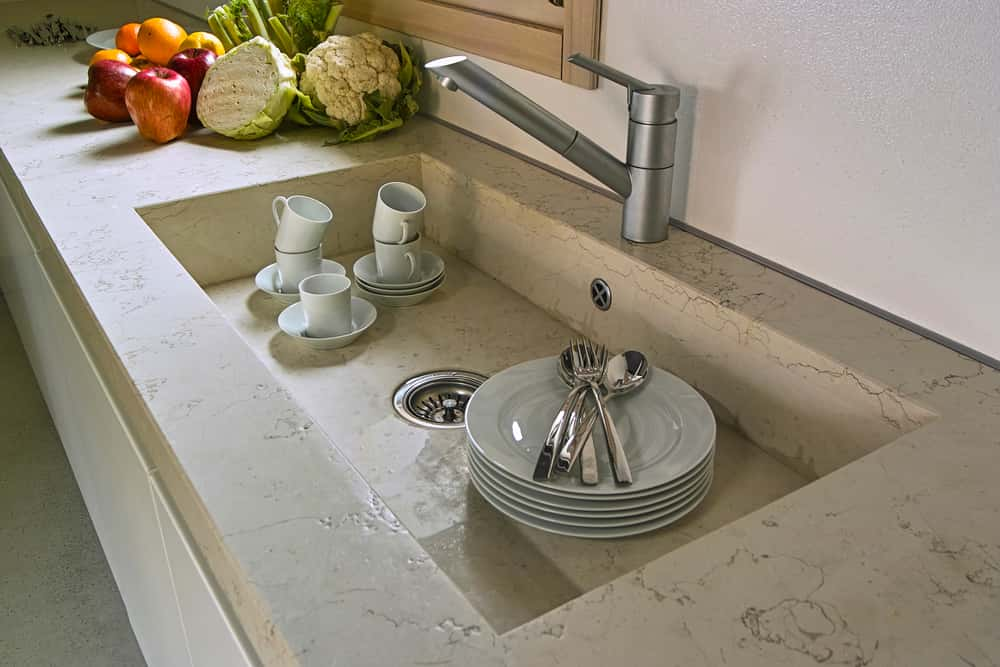
Ergonomic considerations, or the usability and design of the sink for optimal comfort and productivity, are very important when it comes to choosing the perfect sink.
Do keep these considerations in mind, and choose the ergonomic features that will work best for you:
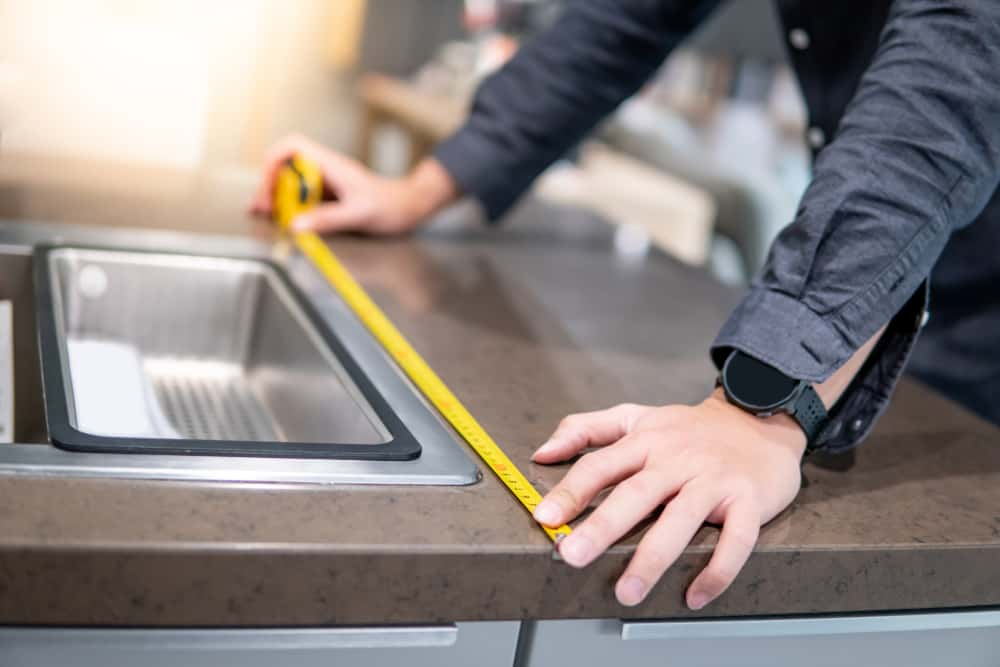
Now that we’ve given you the lowdown on the ideal traits of a kitchen sink, we hope you’re better positioned to make the right choice for your home! If you still need help with your kitchen design, do hop on over to the nearest HomeLane Experience Centre. Our expert designers are always at hand!

 EXPLORE MORE
EXPLORE MORE EXPLORE MORE
EXPLORE MOREBy submitting this form, you agree to the privacy policy and terms of use